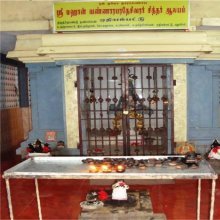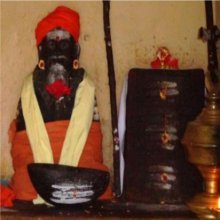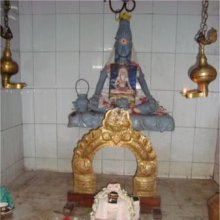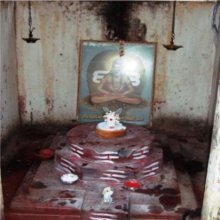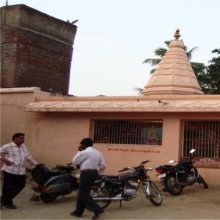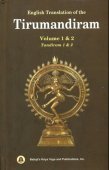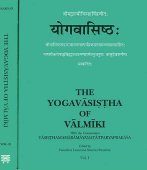Camati, Camāti, Cāmāti: 3 definitions
Introduction:
Camati means something in Buddhism, Pali, Hindi, Tamil. If you want to know the exact meaning, history, etymology or English translation of this term then check out the descriptions on this page. Add your comment or reference to a book if you want to contribute to this summary article.
Images (photo gallery)
(+33 more images available)
Languages of India and abroad
Pali-English dictionary
Source: Sutta: The Pali Text Society's Pali-English DictionaryCamati, (& cameti) (cam to sip; but given at Dhtm 552 in meaning “adana,” eating) to rinse, only in cpd. ācamati (ācameti). (Page 262)

Pali is the language of the Tipiṭaka, which is the sacred canon of Theravāda Buddhism and contains much of the Buddha’s speech. Closeley related to Sanskrit, both languages are used interchangeably between religions.
Hindi dictionary
Source: DDSA: A practical Hindi-English dictionaryCamaṭī (चमटी):—(nf) a guide stick.
...
Tamil dictionary
Source: DDSA: University of Madras: Tamil LexiconCamāti (சமாதி) noun < samādhi.
1. (Yoga Philosophy) Intense contemplation of God, identifying oneself with Him, one of aṣṭāṅka-yōkam, q.v.; அஷ்டாங்கயோகத்துள் மனத்தைப் பரம்பொரு ளோடு ஐக்கியப்படுத்தி நிறுத்துகை. [ashdangayogathul manathaip paramboru lodu aikkiyappaduthi niruthugai.] (சிலப்பதிகாரம் அரும்பதவுரை [silappathigaram arumbathavurai] 14, 11, உரை. [urai.])
2. Will, as of God; சங்கற்பம். பிஞ்ஞகன் சமாதியாலே [sangarpam. pijnagan samathiyale] (திருவாலவாயுடையார் திருவிளையாடற் [thiruvalavayudaiyar thiruvilaiyadar] 16, 5).
3. See சமாதிக்குழி. [samathikkuzhi.]
4. Burial alive of a leper (R. F.); குஷ்ட ரோகியை உயிருடன் புதைக்கை. [kushda rogiyai uyirudan puthaikkai.]
5. (Rhetoric) Attribution of a deed to a person or thing other than its agent, a merit of poetic composition; ஒன்றன் வினையை ஒப்புடைப்பொருள்மேல் ஏற்றிச்சொல்லுகை யாகிய செய்யுட்குணம். [onran vinaiyai oppudaipporulmel errichollugai yagiya seyyudkunam.] (தண்டியலங்காரம் [thandiyalangaram] 24.)
--- OR ---
Cāmāti (சாமாதி) noun See சாமாசி. [samasi.] (R.)
--- OR ---
Camati (சமதி) noun < samatā. Conformity, ஒப்பு. [oppu.] Madras usage
Tamil is an ancient language of India from the Dravidian family spoken by roughly 250 million people mainly in southern India and Sri Lanka.
See also (Relevant definitions)
Starts with: Camati-ilvai, Camatikkal, Camatiman, Camatiperu, Camatishtan, Camatitam, Camatiyatai, Camatiyuppu.
Ends with: A-campirannatacamati, Acamati, Anticamati, Campirannatacamati, Cavikarpacamati, Kalvacamati, Nanacamati, Niruvikarpacamati, Paccacamati, Pancamati, Paramacamati, Yokacamati.
Full-text (+94): Samadhi, Cam, Camatiperu, Samadhigamana, Samadhigama, Camatikkal, Camatiyatai, Paramanishtai, Niruvikarpacamati, Paramacamati, Camutti, Samadhiyoga, Samadhidhyana, Samadhisthiti, Samadhimarana, A-campirannatacamati, Campirannatacamati, Samadhividhi, Samatha, Indriyani Sutta.
Relevant text
Search found 150 books and stories containing Camati, Camaṭī, Camāti, Cāmāti, Samathi, Samaathi, Samadi, Samadhi, Chamathi, Saamaathi; (plurals include: Camatis, Camaṭīs, Camātis, Cāmātis, Samathis, Samaathis, Samadis, Samadhis, Chamathis, Saamaathis). You can also click to the full overview containing English textual excerpts. Below are direct links for the most relevant articles:
The Great Chariot (by Longchenpa)
Part 3c.2 - How to establish samadhi by becoming familiar with this < [B. The gradation of powers of those who meditate into high, middle, and low]
Part 5 - The instruction to attend on good friends < [D. Beings to be avoided, along with those associated with them]
Part 10b.5) The six perfections: Meditation < [B. the extensive explanation of arousing bodhicitta]
Jainism and Patanjali Yoga (Comparative Study) (by Deepak bagadia)
Part 4.10 - Samyama and its effects (parinama) < [Chapter 2 - Yoga philosophy and practices]
Part 11 - Biographies (Patanjali v/s Mahavira) < [Chapter 4 - A Comparative Study]
Part 4.9 - Samadhi and Samapattis < [Chapter 2 - Yoga philosophy and practices]
Mahayana Mahaparinirvana Sutra
Chapter XXXVI - On Bodhisattva Lion's Roar (d) < [Section Seven]
Chapter XXXVII - On Bodhisattva Lion's Roar (e) < [Section Seven]
Chapter XXX - On Bodhisattva Highly-Virtuous King (d) < [Section Six]
Sripura (Archaeological Survey) (by Bikash Chandra Pradhan)
Scultures of Dhyani-Buddha < [Chapter 3 - Sculptural Programme]
Scultures of Vajraraga < [Chapter 3 - Sculptural Programme]
Scultures of Sadaksari-Lokesvara < [Chapter 3 - Sculptural Programme]
Practicing Insight on Your Own (by Acharn Thawee Baladhammo)
The Method Of Adjusting The 5 Indriya Evenly < [Chapter 4]
The Characteristics Of Forgetting
Identifying Sabhava (specific Phenomena) < [Chapter 2]
Vivekachudamani (by Shankara)
Related products
